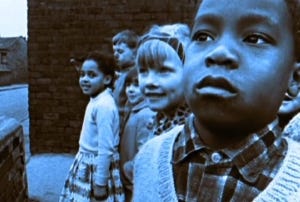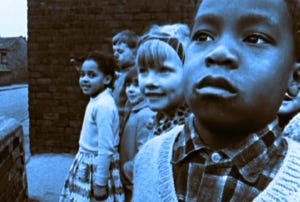Handsworth Songs | Sus
In 1986, Harun Farocki was commissioned by the German television series Filmtip to record a series of pieces, one of which was Catchphrases – Catch Images. A Conversation with Vilém Flusser. It’s a deceptively simple video. Farocki analyzes a German tabloid, Bild Zeitung, with Czech-bor…
Keep reading with a 7-day free trial
Subscribe to Cinema Year Zero to keep reading this post and get 7 days of free access to the full post archives.





